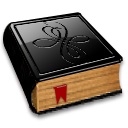“The Path to The Stars”
Konstantin Tsiolkovsky
Collection of science-fiction works
Original: “Путь к звездам. Сборник произведений”
1966
About the Collection of Science-Fiction Works, by K. E. Tsiolkovsky
On the Moon. Fiction Tale
Dreams About the Earth and the Sky
On Vesta
Beyond the Earth
Goals of Stellar Navigation
Change in Relative Gravity on Earth
Living Creatures in Space
Biology of Dwarfs and Giants
Ether Island
Beyond the Earth’s Atmosphere
Science Fiction in the Works of K. E. Tsiolkovsky, by B. N. Vorob’yev
APPENDICES
Appendix I. To the Inventors of Reaction-Powered Machines (28 April 1930)
Appendix II. Is It Only a Fantasy?
Appendix III. Pages from Notebook from Youth
ABOUT THE COLLECTION OF SCIENCE-FICTION WORKS
K. E. Tsiolkovsky
If one were to talk in generality, the content of collection of science-fiction works of K. E. Tsiolkovsky are quite interesting and even amusing. These works evoke great interest, force one to reflect on many purely concrete problems imposed by navigation in outer space, and will contribute to the increase of number of enthusiast sin this region of science and technology.
Such compositions as “On the Moon”, “Beyond the Earth” and others are read with interest and leave a deep imprint on the memory of the reader.
In the collection there is reflected outlook of K. E. Tsiolkovsky, eccentric thinker, self-taught scientist, fundamental originator and great enthusiast of outer navigation. He strove to substantiate in his works the idea that man, being com pletely bound to his native planet, would nevertheless gain infinitely if he gradually would conquer outer space. He proved that life in outer space, where there is no acceleration due to gravity with respect to inhabited location of the rocket, or even on such bodies as the Moon or asteroids, where the gravity is extraordinarily small as compared to the Earth, has great advantage inasmuch as here with the same expenditure of energy it will be possible to produce incomparably greater work. Furthermore, in the absence of any pathogenic microbes, using the continuous radiation of the Sun in artificially created locations with regulated temperature, humidity and composition of air, it would be possible to cultivate various plants, supplying food products for the human population and, on the other hand, absorbing the excretions of animal organisms.
The realisation of similar equilibrium animal and vegetable life on large space rockets, equilibrium, allowing indefinitely long existence in outer space during conditions, of only regulated consumption of energy of solar rays, presents a very interesting idea which one should consider in detail for the possibility of its realisation.
It is possible to agree also with the author’s idea about the fact that life will be excellently developed and will flourish also with the absence of gravity and that for animal organisms the atmospheric pressure may be much lower than the usual Earth-normal. K. E„ Tsiolkovsky’s considerations about various devices ensuring the convenience of existence inside the rocket in the absence of gravity are very interesting.
Very captivating are his description of lunar landscapes, journeys to the Moon and even his fantasy about the jumping lunar animals or animalplants, which hide in ravines or follow the sun in order to escape the approaching cold of the lunar night. Even these fantasies seem appropriate, since in spite of their improbability they soften the picture of the severe situation of nature in the Moon.
***
Would you like to read other works of Konstantin Tsiolkovsky?
Read them online in English or download them for free in PDF format on the page “Scientific Heritage” of the website.
Read them online in the original Russian or download them free of charge in PDF format on the page “Научное наследие” of the website.
Enjoy reading them!
